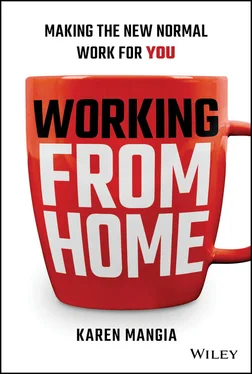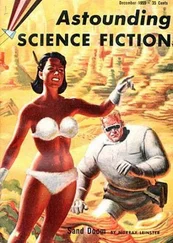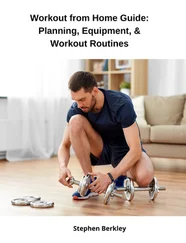I don't remember exactly what transpired. The video shows that I was conscious after the crash, but I don't remember being in the car and bobbing my head as the crumpled chassis lay crushed on the pavement while the rescue crews came onto the track to pull me from the car. I learned about my new normal when I woke up in the hospital. I was hooked to machines and surrounded by family, friends, and doctors. I couldn't speak because of the tube down my throat. I had to communicate with a pen and a piece of paper. They told me what happened. And then I watched the videos.
In an instant, a piece of the suspension broke and pierced the chassis, sending me into the retaining wall. The accident was a mechanical failure. Probably some metallurgical issue that happened six months ago – who knows? – when the suspension was built 4,000 miles away from Indianapolis Motor Speedway. When the suspension failed, the car careened into the wall, forcing a metal shaft into my right thigh and striking my femoral artery on its way out of my left side. The piece that impaled me (that's a weird word to write about yourself) was connected to the car. Basically, I was a shish kebab.
In order to pull me out, they had to remove the metal shaft from my body – leaving a hole that my doctor said was big enough for him to insert his whole fist inside. Luckily, Indiana University Methodist Hospital was just a four‐minute drive away – the police cleared the streets and the ambulance drivers told me they made it in 2:47. Not only was their speed impressive, it probably saved my life.
I had two complete blood transfusions before I even went into the operating room. My heart stopped. The doctors thought I would code before they could even get me into surgery.
Hey, let me stop for a minute. This isn't a foreword about an injury: it's a foreword about a recovery. Because that's what Karen's book is all about.
I realized that the only response to a setback is a comeback. If you're holding this book, right now, you know that's true. You're interested in getting back on track.
What's the fastest way to get back into a race car? I asked my doctor. He told me the thing I couldn't stand to hear: Do nothing . Can you imagine going from 230 miles per hour in your day job to an absolute standstill? To put it mildly: I didn't like it. But I did it. If I was going to do nothing, I was going to do nothing better than anybody. That's just how I'm wired.
Soon, my doctor told me I could try to walk again (yes, that's right: I had to be allowed to walk). That first day, they said I could only take a maximum – a maximum – of 600 steps. I listened to the five words I never want to hear: “ You have to start slow .”
Soon 600 steps led to 800 steps, and that led to physical therapy and a lot of other day‐to‐day stuff that was uncomfortable, difficult, grueling, and … well, everything you imagine it to be. They say in racing that you have to move slow to go fast. Now, out of the car, those words had never been truer.
Because trying to go faster is how most of us live our lives, right? Racing from one commitment to the next. From one thought to the next. Trying to shave seconds off every task in our own race against the clock. When you can't do what you used to do, because of unexpected circumstances, you don't want to go slow. But in order to make a comeback, you have to shift your mindset. You have to be open to seeing things in a new way.
There were two words that came into my life when I was in recovery. I said these words to my doctors, my family, and myself. I still do. Here they are: #ChallengeAccepted.
Life happens. The global pandemic happened. Nobody wanted it. Nobody asked for it. But, here we are. Challenge. Accepted.
We have to accept the challenge that life has given us. This book is going to give you the pole position on conquering those challenges. This book will give you a fresh perspective on the new normal. Karen will show you how to make working from home work for you.
In less than 18 months, I was walking, training, and driving better than before. Not only did I improve on everything I did before the accident, I also learned something new. I learned to dance. I became a contestant on the 2016 season of Dancing with the Stars . Did I ever think I would be doing the jive and the Viennese Waltz in front of a national television audience? Well, it was another unexpected series of events. I said, “Challenge accepted.” My dance partner, Sharna Burgess, and I made it to the top two . . . but came in as runners‐up. When one of the judges said I was the best male dancer they had ever had on the show, I was so grateful and honored and . . . blown away. I realized something in that moment: the past does not define us. Are you with me?
Today, I'm back to racing – I just ran at the Texas Motor Speedway in front of zero fans. And yes, it was strange. People ask me if I'm nervous when I get back in the car. I tell them that love is stronger than fear. I tell them that I can't let what happened to me keep me from being who I am. I tell them I want to win. Nerves, fear, disappointment, and surprises are part of the game of life. But so is victory. So is learning to dance in ways you never thought you could. Are you ready to get on the right track?
Life hands all of us unexpected circumstances. Luckily it also hands us courage. And passion. And the ability to choose how we react to whatever we've got. That's what Karen knows, and shares, in this book.
Getting back to work is hard in the new normal. Believe me, I know how that feels – we are all making adjustments and finding out what adaptability really means. Karen will show you how to adapt. How to shift into a new approach to success – because victory might be closer than you think.
Even when the unexpected knocks you out of the race, you can still bounce back. Even from a global setback. That's how human beings are wired.
It's time to start your engines. And maybe even learn some new choreography.
Something that may have started far away from where you are has forced you into unexpected circumstances. You find yourself in a situation that makes you say, “I never wanted this.” You know what I mean?
I think we all do.
Through Karen's work, and her words, you'll see your path to recovery. Perhaps you'll even see that you are capable of much more than what other people might expect from you. You'll find your way to get up to speed again, no matter what your circumstances. Whatever race you're running, this book will show you how to find the confidence and innovation that you need. And maybe even try some new dance steps along the way. Reinvention is waiting for you. You just have to recognize that you are more than your circumstances. Are you ready to say, #ChallengeAccepted?

James Hinchcliffe
Professional race car driver, runner‐up on Dancing with the Stars, and the mythical mayor of Hinchtown (https://www.hinchtown.com).
We are all shift workers now.
Working from home, under current conditions, is more than just a big change. The new normal is a shift for all of us, shifting from commutes and cubicles into a brave new world, where the line between work and home isn't just blurred – it's been erased.
COVID‐19 has transformed the way that we work, interact, and live. But the change to working from home was happening long before the global pandemic. Post‐coronavirus, much of work will not return to the way it was. And many workers won't be returning to headquarters anytime soon. As I write these words, it's difficult to predict what the new normal will look like exactly. Whatever the future holds, the odds are that you'll be looking at it from your home office.
Читать дальше













